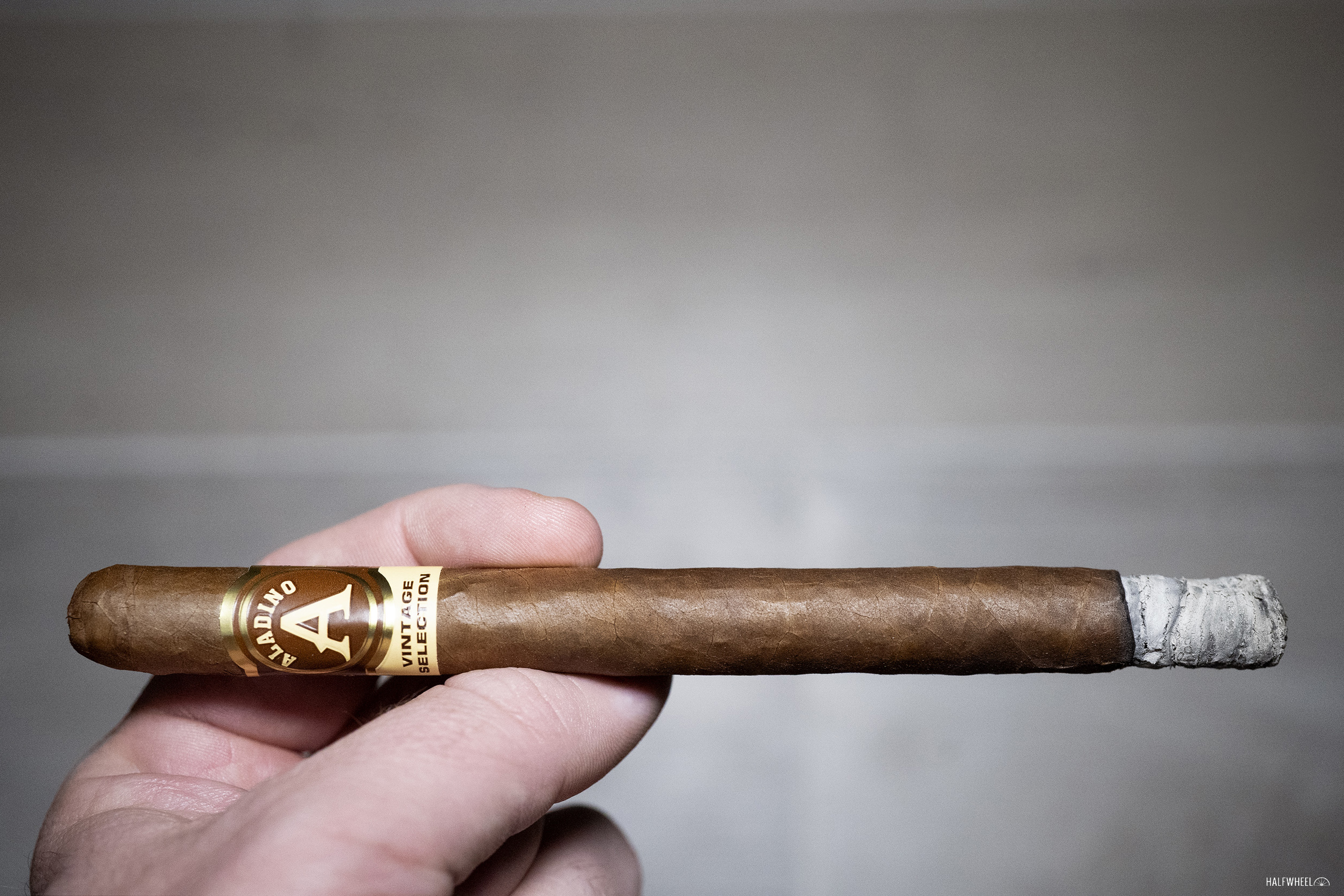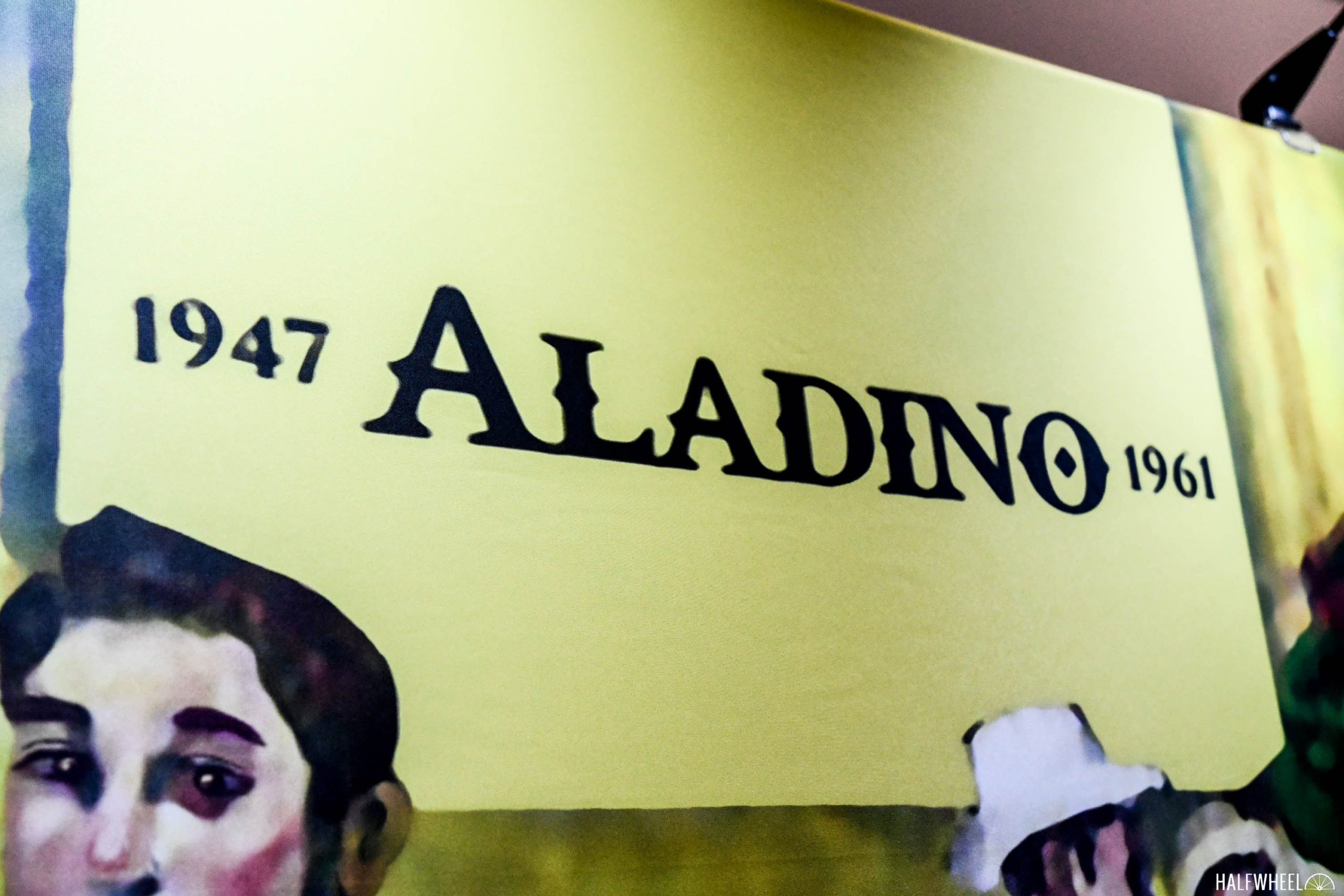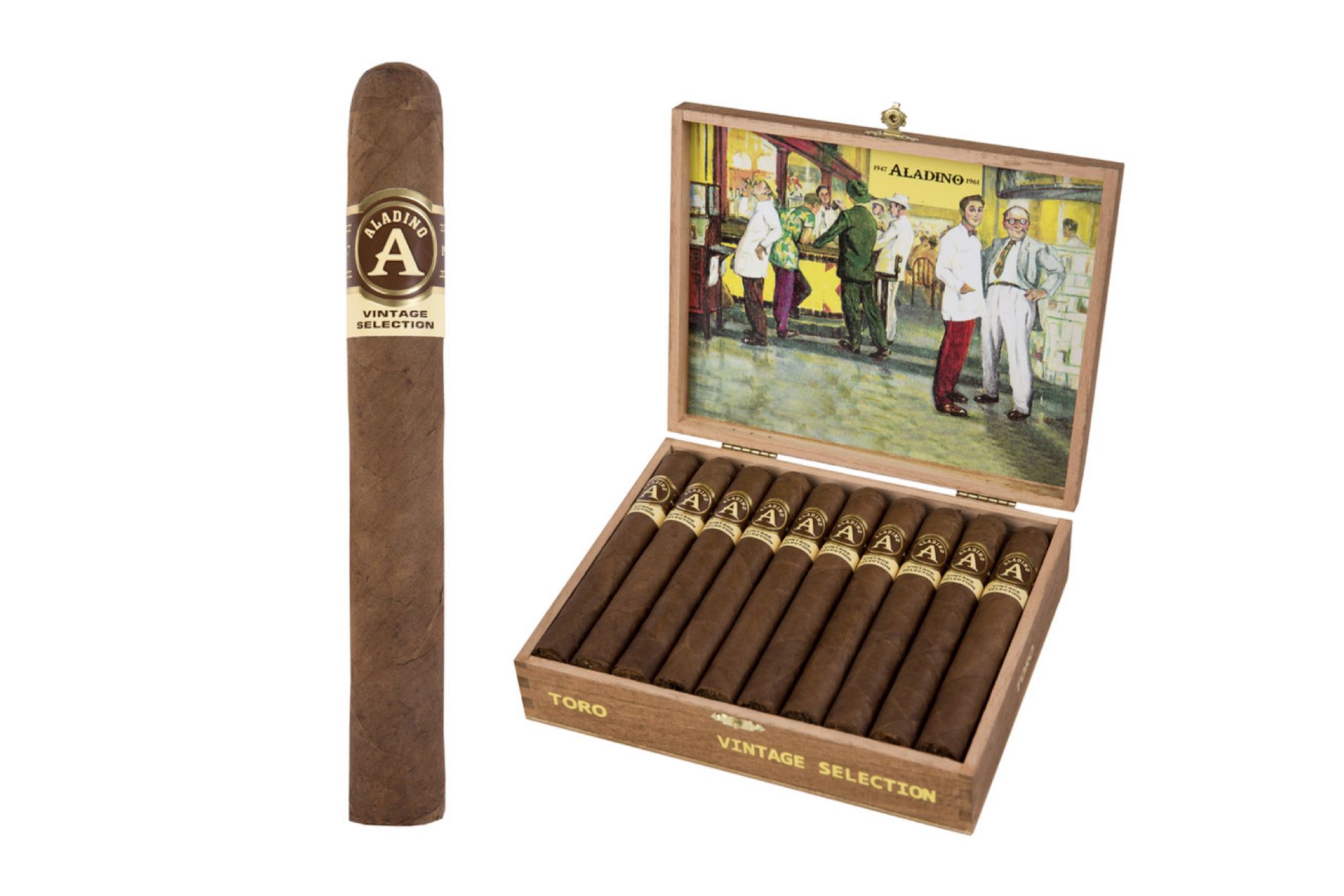One of the words that does not get used nearly enough in the premium cigar world—at least in my opinion—is vintage. The vast majority of the cigar industry is focused on producing non-vintage cigars that are consistent, reliable and largely unchanged from year to year, which really means being consistent with the tobacco used to create the cigars as it comes from different crop years. It’s certainly a smart business move and an admirable goal, but I also think there’s a lot to be said for showcasing the year-to-year differences in crops.
I bring that up because in 2020, JRE Tobacco Co. invoked the word vintage for one of its new releases, the Aladino Vintage Selection. The line debuted in a 4 1/2 x 48 Rothschild, with a blend that used Honduran habano wrapper over a Honduran corojo binder and Honduran corojo fillers, all of which were grown at the company’s Finca Corojo farms outside of Danlí, Honduras. The inspiration for the blend came from what the Eiroa family considers to be the golden era of Cuban cigars, when habano wrappers covered corojo fillers, according to Vivian M. Eiroa, a spokesperson for the company.
The cigars that came out were all rolled between 2015 and 2016, according to the company, which gave them four to five years of age on them when they arrived at stores, and that’s not counting the time and aging the tobacco itself went through prior to being rolled.
In May 2021, the company released two new sizes for the line, a 6 x 50 toro and a 7 x 38 lancero that the company calls the Elegante, a size and name that appears in some of the company’s other lines as well. With their release, the Aladino Vintage Selection now sits at three sizes:
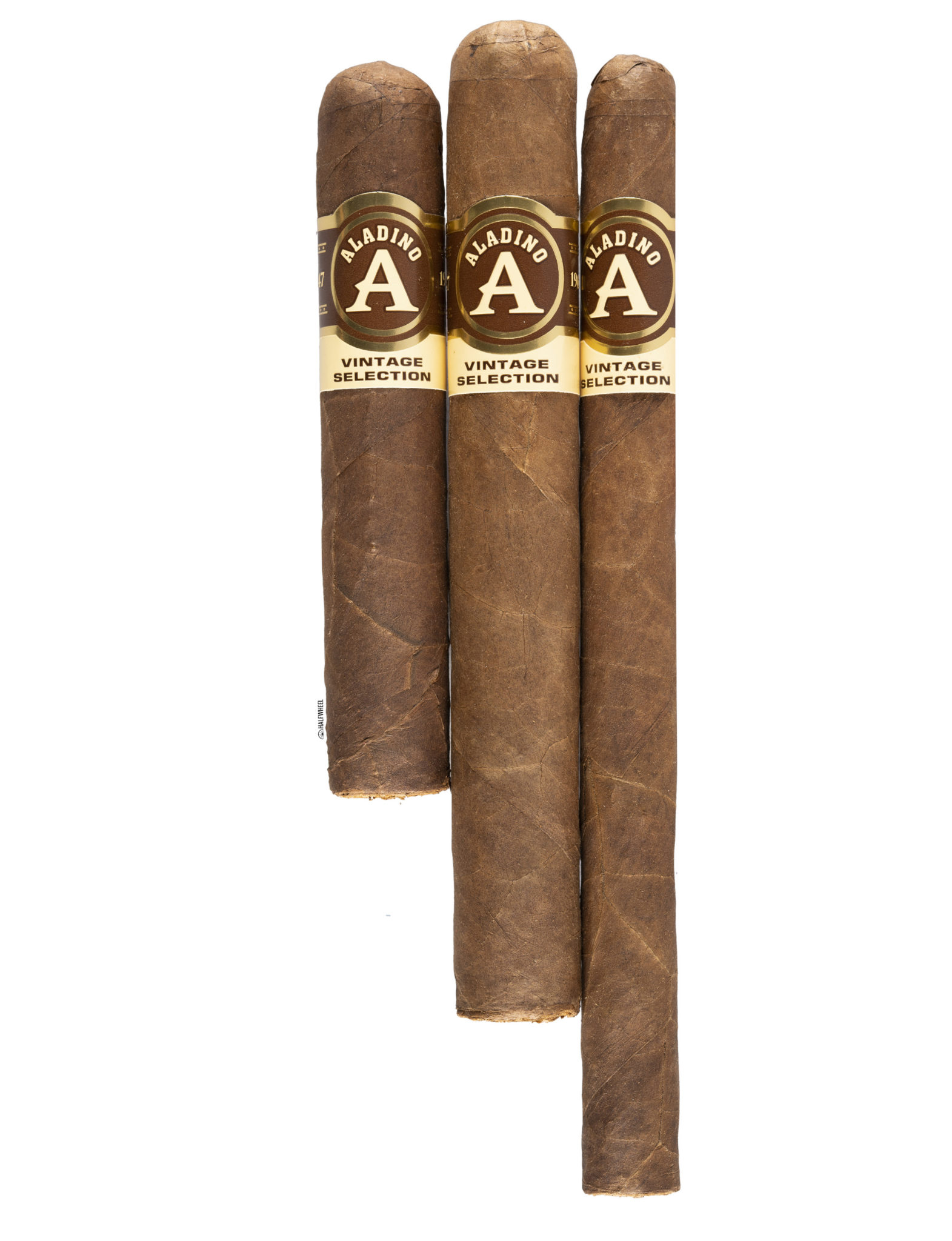
- Aladino Vintage Selection Rothschild — (4 1/2 x 48) — $6 (Box of 50, $300)
- Aladino Vintage Selection Toro (6 x 50) — $8.80 (Box of 20, $176)
- Aladino Vintage Selection Elegante (7 x 38) — $8 (Box of 20, $160)
The company has neither disclosed when these two new sizes were rolled, nor included any age statements on the packaging of the cigars.
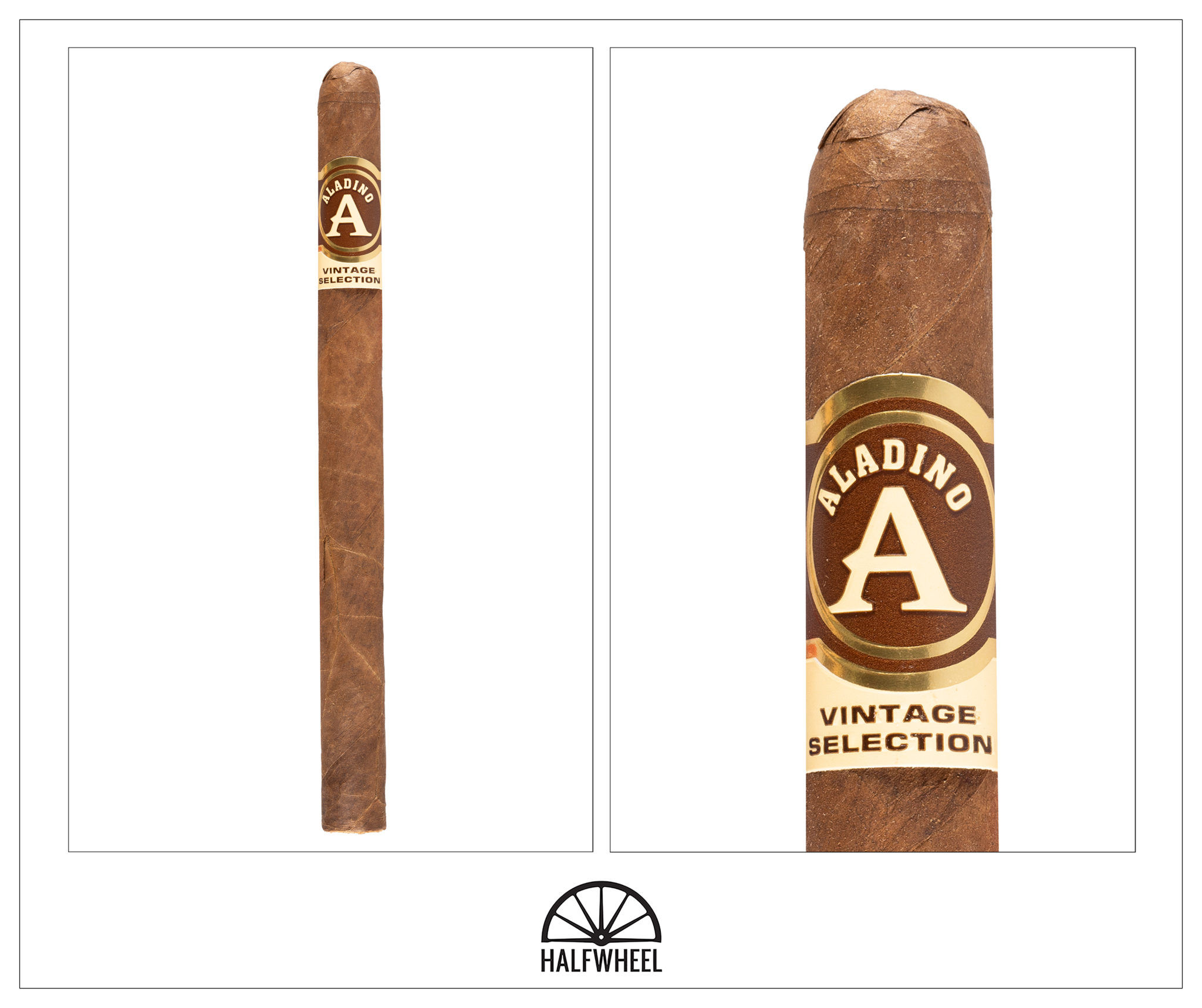
- Cigar Reviewed: Aladino Vintage Selection Elegante
- Country of Origin: Honduras
- Factory: Fabrica de Puros Aladino at Las Lomas Jamastran
- Wrapper: Honduras (Habano)
- Binder: Honduras (Corojo)
- Filler: Honduras (Corojo)
- Length: 7 Inches
- Ring Gauge: 38
- Vitola: Lancero
- MSRP: $8 (Box of 20, $160)
- Release Date: May 2021
- Number of Cigars Released: Regular Production
- Number of Cigars Smoked For Review: 3
At a quick glance, the Aladino Vintage Selection Elegante looks like most other lanceros, but a more detailed inspection reveals a slightly more rounded head and that the band is a bit higher than average. Neither concerns me, but the latter has me wondering if the band will become part of the smoking experience by way of it hitting my lips. As for the tobacco, it’s a darker-than-medium shade of brown, dry both visually and to the touch, with a bit of grit for the fingers, while veins are small but visible and tangible. It also has some visual appeal due to a slight bit of color variation that reveals the leaf’s vein structure. Each sample is consistently firm, not quite hard but also not showing much in the way of give with a simple squeeze. The aroma from the foot has a bit of floral sweetness up first, followed by a mix of wheat and dried tobacco in the general sense, almost as if walking through a warehouse full of leaves. One sample is particularly vibrant and rich, a hybrid of the generic tobacco smell and freshly raked, dry leaves. Air movement on the cold draw is good, offering just a bit of firmness and the feeling of the rounded head condensing the air into a smaller opening. The flavor here is quite mild and generic, though a thick, subtle sweetness comes out on occasion. I could make the case for some sort of bakery staple such as a cake donut or coffee cake as the most recognizable, though again, it’s pretty mild.
The Aladino Vintage Selection Elegante starts out with some of the signature flavors of Honduran tobacco, and in particular tobacco that has some age to it: the distinctive terroir of the region, dry woodiness, a bit of pepper, and an overall dry profile on the taste buds. While two samples are great in this regard, one isn’t, bringing a bit of sourness into the mix and reminding me of the seeming tightrope that Honduran tobacco walks. There’s a very pleasant white pepper wrapped in a slightly dry creaminess with some floral on retrohales, a very good accent mark on the full profile when desired. After knocking the first clump of ash off the cigar, I notice my tongue tingling ever so slightly while the cigar is at rest, seemingly the lingering effect of the pepper and terroir of the cigar. Yet at the same time, there is a building creaminess that softens the smoke with each puff, until the end of this section, where it is a full, soft smoke with great mouthfeel, though it leaves enough space for the dry wood and black pepper to still do their things. Flavor hovers between medium and medium-plus, body builds from a dry medium to a creamy medium-full, and strength sits just shy of medium, though the flavor could lead to thinking this cigar is fuller than it actually is in its early goings. Combustion and construction are problem-free out of the gate, with a sharp burn line, slightly firm draw, solid smoke production.

A retrohale at the start of the second third shows that it is notably more potent than in the first third; it still seems to be a primarily white pepper profile, but now it hits the nostrils with more authority. It’s not a knock out punch, and calling it a sting isn’t doing it justice, so imagine it somewhere in between those two descriptors. The profile shows a consistent wood flavor with a bit of dry earthiness and black pepper, while creaminess is a bit more varied than I would like, as the is all the better when it is present. After a very enjoyable first half, the first sample I smoked quickly turns metallic, bitter and sharp on the tongue right around the midway point, a flavor that is the unmistakable taste of tar. I inspect the head of the cigar and find the distinctive dark brown ooze responsible for the flavor, which I’m not thrilled about, though a quick clip of the head removes the offender. Thankfully, it’s only present in one of the three samples. The second half sees the creaminess from earlier begin to move out of the profile, replaced fairly quickly by a woodier note, surprisingly rich and not of the dry and sharp lumber sensation I’ve been coming across lately. Depending on how much creaminess is present in the second third, the result is either rather pronounced or more of an intensifying of an already plentiful flavor. Retrohales are still fairly pepper-laden and offer a welcomed accent to the flavor, though the two aren’t in as much harmony as they had been earlier. Flavor is medium-plus to medium-full, body started this section close to full but is now closer to medium, while strength is ticking up towards medium-full. Construction is very good in all departments.
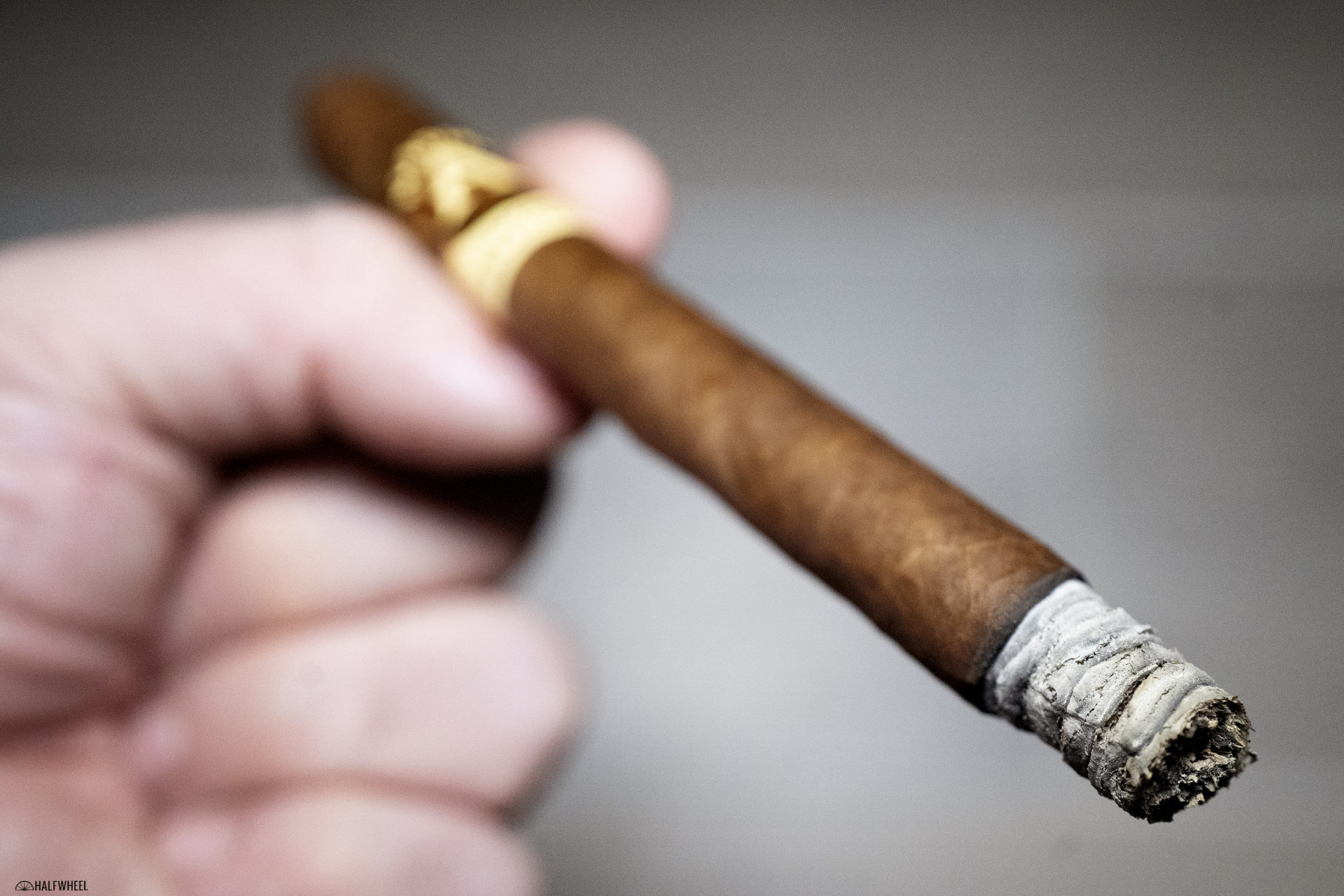
The woodiness carries the Aladino Vintage Selection Elegante into its final third, seemingly shedding bits of the black pepper along the way so that it can develop on its own. That means a bit richer and fuller expression of the wood, though the cigar’s overall profile gets a bit more singular. Pepper isn’t absent from the profile for too long, returning as the burn line would hit the band. There’s a touch of terroir beginning to enter the profile as well, something that reminds me of old vine grapes but without the vegetal note, and the much better expression of Honduras’s soil that makes Honduran tobacco so enjoyable when it has been processed and aged correctly and for a proper amount of time. The final puffs are a bit more pointed, not enough so that I’m worried that the tar is back—and there’s no evidence to suggest that—but it’s enough that I’m content to put the cigar down with about an inch to go, which in the case of one cigar comes as seemingly too much heat begins affecting the flavor.

Final Notes
- The band proved not to be an issue in any of the three cigars, though I’d still prefer it to be a bit lower.
- One sample had a final third that seemed a bit damper than the others, requiring me to touch it up a bit.
- While not showing as many as some other Honduran cigars I have smoked—including some from JRE—the Aladino Vintage Selection Elegante shows some of those truly special puffs that Honduran tobacco can offer.
- Brooks Whittington reviewed the Rothschild vitola in October 2020; that cigar went onto place #20 on the halfwheel Top 25 Cigars of 2020 list.
- In May 2021, JRE Tobacco Co. began shipping the Aladino Cameroon Elegante, a lancero that uses a Cameroon-seed wrapper grown in Honduras.
- Even with a fairly full flavor profile, there isn’t a lot of nicotine strength to be found in the Aladino Vintage Selection Elegante. It has some strength, but far from enough to have any sort of ill effect, and certainly not enough to have me questioning the wisdom in having another cigar after it.
- The cigars for this review were purchased by halfwheel.
- Final smoking time was one hour and 40 minutes on average.
- Site sponsor Atlantic Cigar Co. carries the Aladino Habano Vintage Selection Elegante.
Over the past several years I have come to the belief that Honduran tobacco has one of the greatest potentials to shine when given the proper processing and aging, and the Aladino Vintage Selection Elegante only furthers that belief, even if this particular cigar might not be the best example of this in the line. While each sample has some incredible high points, each suffers from some rougher spots as well. One sample had a tar buildup, one struggled a bit with combustion and heat, and a third had a rough start and never quite climbed to the same peak as the others. That leaves the overall impression of each, and I will say that it remains very favorable, much like the Rothschild vitola did. While I wouldn’t put this in the upper tier of Honduran puros that I have smoked, I’d certainly put it in the next tier, making it a cigar that is absolutely worth trying.

